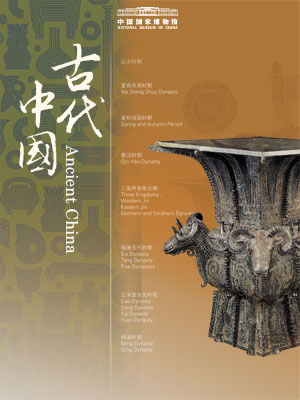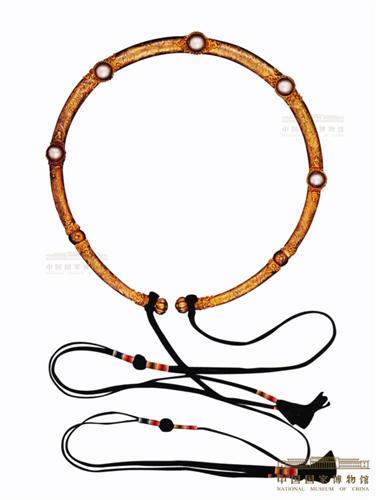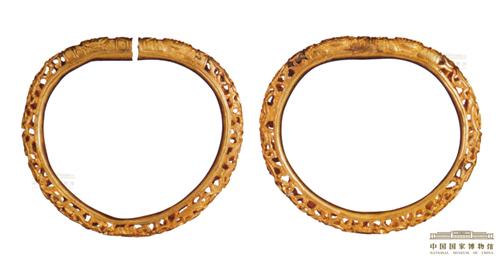This coloured pottery basin is red, with intermittent black ribbons painted on the edge of the mouth, and two sets of symmetrical human-mask-fish patterns on the inner wall with black colour. The human face is round, with bun-like spikes and fish fin-shaped decorations on the top of the head. The right half of the forehead is painted black, and the left half is black and semi-curved. The eyes are thin and straight, seemingly closed. The bridge of the nose is straight, in an inverted “T” shape. There is a deformed fish pattern on the left and right sides of the mouth, and the fish head overlaps with the outline of the human mouth, which seems to be holding two big fish at the same time in the mouth. In addition, there are two confronting small fishes on the human face and ears, which form a strange combination of human and fish. Between the two human faces, there are two big fish chasing each other. The composition of the whole picture is free and dynamic, with simple patterns and full of fantasy colours.
The ancient Banpo people painted fish patterns and net patterns on many pots. This should be related to totem worship and economic life at that time. Banpo people built settlements on the terraces of the river valley and lived a settled life mainly based on agricultural production. They also engaged in gathering, fishing and hunting.This fish pattern decoration fully reflects their lives.
There are a large number of animal-shaped patterns in the painted pottery patterns of the Yangshao Culture, such as fish, deer, and frogs, with fish patterns being the most typical ones. The human-mask-fish pattern coloured pottery basin is recognized as a fine pottery art. Many pieces of painted pottery basins with similar paintings were unearthed from the site, and they were mostly used as the lids of children’s ossuary, much like special burial implements. The human-mask pattern is composed of human and fish. The human head has a strange attire, like a makeup image for religious activities, showing the identity of a wizard. Therefore, this type of picture is generally regarded as a symbol of the wizard asking the fish-god to possess his body, calling for the soul of the child who died, and praying for good luck. Some people think that the coexistence of human-mask and fish pattern constitutes a human-fish fusion, which implies that the fish has been fully deified and may be worshipped as a totem.




